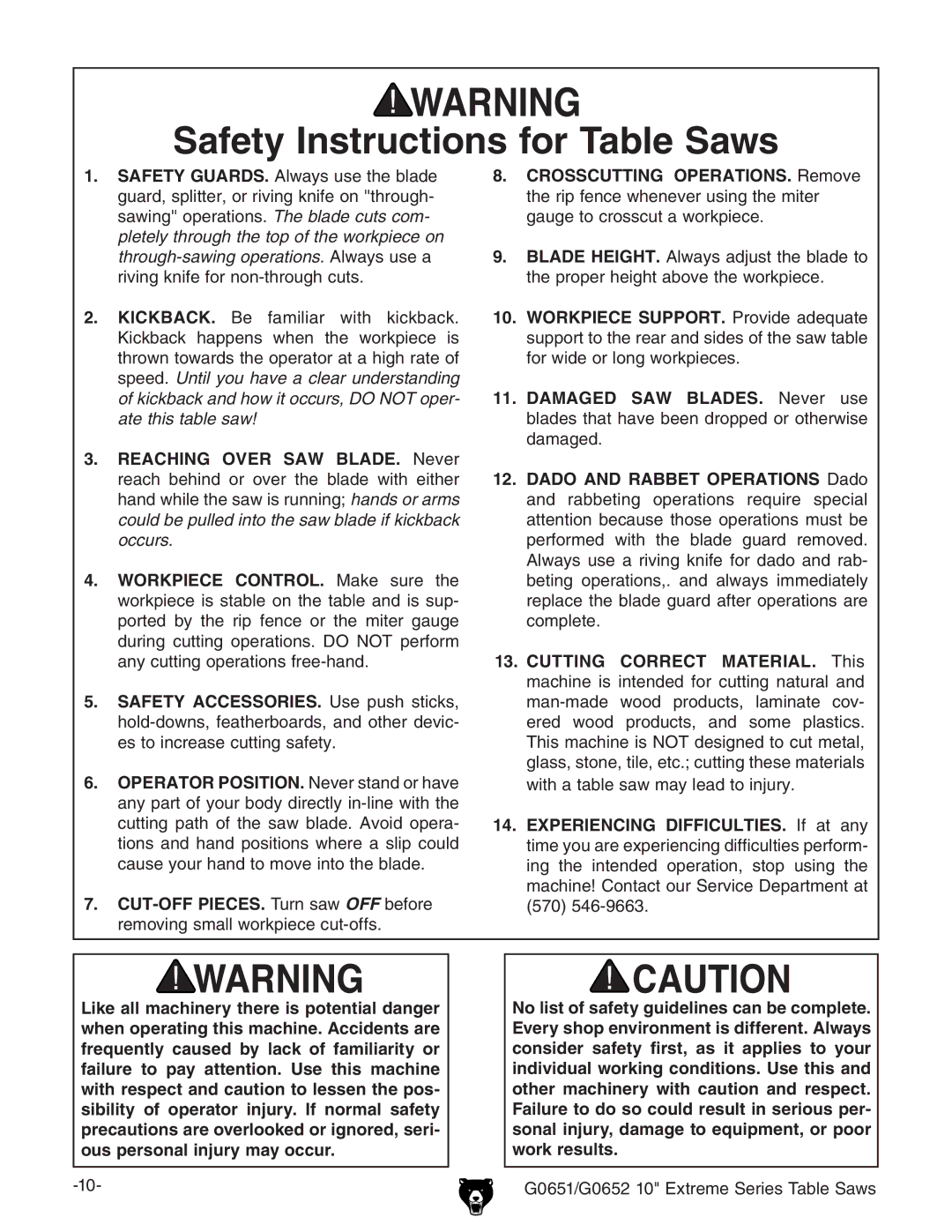
Safety Instructions for Table Saws
1.SAFETY GUARDS. Always use the blade guard, splitter, or riving knife on ''through- sawing'' operations. The blade cuts com- pletely through the top of the workpiece on
2.KICKBACK. Be familiar with kickback. Kickback happens when the workpiece is thrown towards the operator at a high rate of speed. Until you have a clear understanding of kickback and how it occurs, DO NOT oper- ate this table saw!
3.REACHING OVER SAW BLADE. Never reach behind or over the blade with either hand while the saw is running; hands or arms could be pulled into the saw blade if kickback occurs.
4.WORKPIECE CONTROL. Make sure the workpiece is stable on the table and is sup- ported by the rip fence or the miter gauge during cutting operations. DO NOT perform any cutting operations
5.SAFETY ACCESSORIES. Use push sticks,
6.OPERATOR POSITION. Never stand or have any part of your body directly
7.
8.CROSSCUTTING OPERATIONS. Remove the rip fence whenever using the miter gauge to crosscut a workpiece.
9.BLADE HEIGHT. Always adjust the blade to the proper height above the workpiece.
10.WORKPIECE SUPPORT. Provide adequate support to the rear and sides of the saw table for wide or long workpieces.
11.DAMAGED SAW BLADES. Never use blades that have been dropped or otherwise damaged.
12.Dado and rabbet operations Dado and rabbeting operations require special attention because those operations must be performed with the blade guard removed. Always use a riving knife for dado and rab- beting operations,. and always immediately replace the blade guard after operations are complete.
13.CUTTING CORRECT MATERIAL. This machine is intended for cutting natural and
14.EXPERIENCING DIFFICULTIES. If at any time you are experiencing difficulties perform- ing the intended operation, stop using the machine! Contact our Service Department at (570)
Like all machinery there is potential danger when operating this machine. Accidents are frequently caused by lack of familiarity or failure to pay attention. Use this machine with respect and caution to lessen the pos- sibility of operator injury. If normal safety precautions are overlooked or ignored, seri- ous personal injury may occur.
No list of safety guidelines can be complete. Every shop environment is different. Always consider safety first, as it applies to your individual working conditions. Use this and other machinery with caution and respect. Failure to do so could result in serious per- sonal injury, damage to equipment, or poor work results.
